-
 Bitcoin
Bitcoin $119000
-2.21% -
 Ethereum
Ethereum $4315
1.01% -
 XRP
XRP $3.151
-3.11% -
 Tether USDt
Tether USDt $0.0000
0.00% -
 BNB
BNB $808.5
-0.71% -
 Solana
Solana $175.8
-4.21% -
 USDC
USDC $0.9999
0.00% -
 Dogecoin
Dogecoin $0.2250
-3.92% -
 TRON
TRON $0.3469
1.77% -
 Cardano
Cardano $0.7818
-3.81% -
 Chainlink
Chainlink $21.47
-2.10% -
 Hyperliquid
Hyperliquid $43.30
-6.81% -
 Stellar
Stellar $0.4370
-2.84% -
 Sui
Sui $3.682
-4.40% -
 Bitcoin Cash
Bitcoin Cash $590.8
2.67% -
 Hedera
Hedera $0.2484
-5.20% -
 Ethena USDe
Ethena USDe $1.001
0.00% -
 Avalanche
Avalanche $23.10
-4.29% -
 Litecoin
Litecoin $119.2
-3.96% -
 Toncoin
Toncoin $3.409
0.90% -
 UNUS SED LEO
UNUS SED LEO $9.016
-1.29% -
 Shiba Inu
Shiba Inu $0.00001304
-3.82% -
 Uniswap
Uniswap $11.18
1.33% -
 Polkadot
Polkadot $3.913
-3.51% -
 Cronos
Cronos $0.1672
-3.08% -
 Dai
Dai $1.000
0.02% -
 Ethena
Ethena $0.7899
-4.70% -
 Bitget Token
Bitget Token $4.400
-1.23% -
 Pepe
Pepe $0.00001132
-5.93% -
 Monero
Monero $257.9
-6.44%
What is the difference between an ICO, IEO, and IDO?
An Initial Coin Offering (ICO) allows blockchain projects to raise funds by selling new tokens directly to investors, typically in exchange for Bitcoin or Ethereum.
Aug 12, 2025 at 07:56 am
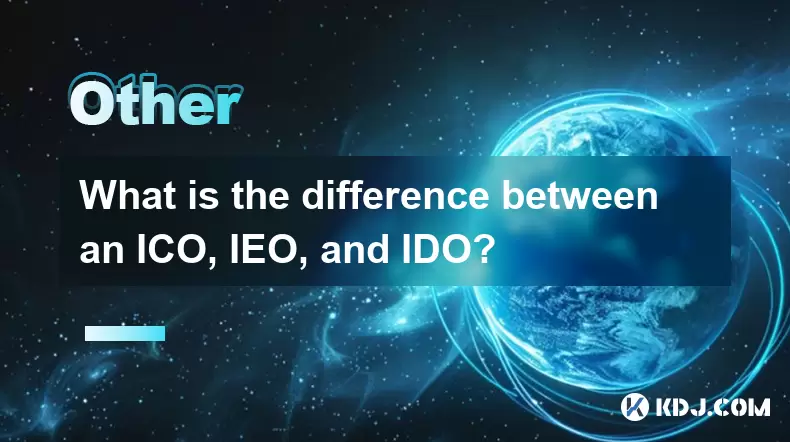
Understanding the Basics of ICOs
An Initial Coin Offering (ICO) is one of the earliest and most foundational methods for blockchain projects to raise capital. In an ICO, a project issues a new cryptocurrency token and sells it directly to investors, typically in exchange for established cryptocurrencies like Bitcoin (BTC) or Ethereum (ETH). This process is usually conducted on the project’s own website or through a dedicated smart contract on a blockchain platform.
The structure of an ICO is relatively decentralized. There is no central authority overseeing the sale, which means investors must conduct their own due diligence. Projects often release a whitepaper detailing their technology, roadmap, and tokenomics. The absence of intermediaries allows startups to launch quickly, but it also increases the risk of scams. Notable early examples include Ethereum’s own ICO in 2014, which raised over $18 million.
To participate in an ICO, users generally follow these steps:
- Visit the official project website
- Connect a compatible cryptocurrency wallet like MetaMask
- Send ETH or BTC to the provided smart contract address
- Receive newly issued tokens directly in their wallet
It's crucial to verify the authenticity of the ICO to avoid phishing sites. Checking the official social media channels and community forums like Reddit or Telegram is a recommended practice.
How IEOs Differ from ICOs
An Initial Exchange Offering (IEO) shifts the fundraising process from the project team to a centralized cryptocurrency exchange. Instead of the project managing the token sale, the exchange handles the distribution, collection of funds, and listing of the token immediately after the sale. This adds a layer of trust, as reputable exchanges perform due diligence before hosting an IEO.
Popular platforms that have hosted IEOs include Binance Launchpad, Huobi Prime, and KuCoin Spotlight. These exchanges require projects to go through a vetting process, which reduces the likelihood of fraudulent offerings. Investors benefit from immediate liquidity since the token is listed on the exchange shortly after the sale concludes.
Participating in an IEO involves the following:
- Register and complete KYC on the hosting exchange
- Ensure your account holds sufficient funds in the required currency (e.g., BNB for Binance IEOs)
- Participate in the sale through the exchange’s dedicated IEO portal
- Tokens are automatically credited to your exchange wallet
This model improves security and accessibility. However, participation is often limited to users who meet specific criteria, such as holding a minimum amount of the exchange’s native token or being in a whitelist lottery.
The Rise of IDOs in Decentralized Finance
An Initial DEX Offering (IDO) represents the evolution of token launches within the decentralized finance (DeFi) ecosystem. Unlike ICOs and IEOs, IDOs take place on decentralized exchanges (DEXs) such as Uniswap, PancakeSwap, or specialized launchpads like Polkastarter and DAO Maker. These platforms enable direct peer-to-peer token sales without centralized intermediaries.
IDO platforms often integrate liquidity pool mechanisms from the start. This means that after the token sale, liquidity is immediately available, allowing traders to buy and sell without delays. Smart contracts govern the entire process, ensuring transparency and reducing the risk of manipulation.
To take part in an IDO, users typically:
- Connect a Web3 wallet like Trust Wallet or MetaMask to the launchpad
- Stake or lock the platform’s native token to gain eligibility
- Join a liquidity pool or contribute funds during the sale window
- Receive tokens directly in their wallet post-sale
Because IDOs are permissionless and occur on-chain, they align closely with the ethos of decentralization. However, this also means that the risk of encountering low-quality or exploitative projects remains significant.
Comparing Token Distribution Mechanisms
The way tokens are distributed varies significantly across ICOs, IEOs, and IDOs. In an ICO, distribution relies on a smart contract deployed by the team. Investors send funds and receive tokens asynchronously, which can lead to delays or errors if the contract is flawed.
In contrast, IEOs use the exchange’s internal systems to manage distribution. When an investor contributes, the exchange records the transaction and credits tokens instantly upon completion. This method ensures accuracy and reduces technical friction.
IDOs utilize automated market maker (AMM) models. Funds raised are often paired with another asset (e.g., ETH) to form a liquidity pool. This means that distribution is tied to liquidity provisioning, and tokens are released according to predefined vesting schedules or bonding curves. Some IDOs implement fair launch mechanisms, where no private allocations are granted, promoting equal access.
Security and Trust Considerations Across Models
Security remains a critical concern in all three models, but the level of trust varies. ICOs carry the highest risk because they lack third-party oversight. Scammers can easily create fake websites and collect funds without delivering tokens. Investors must verify contract addresses and audit reports.
IEOs benefit from exchange-level vetting. Platforms like Binance conduct technical and legal reviews, reducing exposure to fraud. However, this doesn’t eliminate risk entirely—some IEO projects have still failed post-launch.
IDOs operate in a trustless environment, relying on code transparency. Users can inspect smart contracts on block explorers like Etherscan. Despite this, vulnerabilities such as rug pulls or flawed logic in contracts can still result in losses. Using audited launchpads and checking for verified contracts is essential.
Accessibility and Participation Requirements
Each model has different barriers to entry. ICOs are generally open to anyone with internet access and a crypto wallet. However, language barriers, lack of clear instructions, and technical complexity can hinder participation.
IEOs often require users to complete KYC, hold specific tokens, or qualify through lotteries. For example, Binance IEOs require users to hold BNB and participate in a lottery system, limiting access to a global but filtered audience.
IDOs may require users to stake platform tokens or join early contributor programs. Some launchpads use tiered systems based on user commitment, such as the amount staked or duration of participation. While more inclusive than IEOs, they still involve technical setup and gas fee considerations.
Frequently Asked Questions
What happens if I miss an IEO on Binance Launchpad?
If you miss an IEO on Binance Launchpad, you cannot participate retroactively. However, the token is usually listed on Binance shortly after the sale, allowing you to purchase it on the open market. Availability depends on market demand and listing schedules.
Can I sell IDO tokens immediately after purchase?
In most cases, IDO tokens can be sold immediately if liquidity is provided and the trading pair is active. However, some projects implement vesting periods or lock-up clauses that restrict transfers for a set duration.
Are ICOs still legal in the United States?
ICOs in the U.S. face strict regulatory scrutiny from the Securities and Exchange Commission (SEC). If a token is deemed a security, the offering must comply with federal securities laws. Many projects avoid U.S. investors to prevent legal complications.
How do I verify the legitimacy of an IDO launchpad?
Check if the launchpad has undergone third-party audits, has a transparent team, and lists verified projects. Review community feedback on platforms like Twitter and Discord, and confirm contract addresses on blockchain explorers.
Disclaimer:info@kdj.com
The information provided is not trading advice. kdj.com does not assume any responsibility for any investments made based on the information provided in this article. Cryptocurrencies are highly volatile and it is highly recommended that you invest with caution after thorough research!
If you believe that the content used on this website infringes your copyright, please contact us immediately (info@kdj.com) and we will delete it promptly.
- PumpFun (PUMP) Price: Riding the Meme Coin Wave or Facing a Wipeout?
- 2025-08-12 16:50:12
- Arctic Pablo Coin: Meme Coin Growth Redefined?
- 2025-08-12 16:50:12
- Ether ETFs Surge: Inflows and Bull Signs Point to $4K ETH?
- 2025-08-12 16:30:12
- Bitcoin, Crypto Market, and CPI Anticipation: A New York Minute on Volatility
- 2025-08-12 16:30:12
- Bitcoin, CPI, and Market Fears: Navigating the Crypto Landscape
- 2025-08-12 15:10:13
- BTC Traders Eye ETH Targets as CPI Looms: A New York Minute
- 2025-08-12 15:10:13
Related knowledge
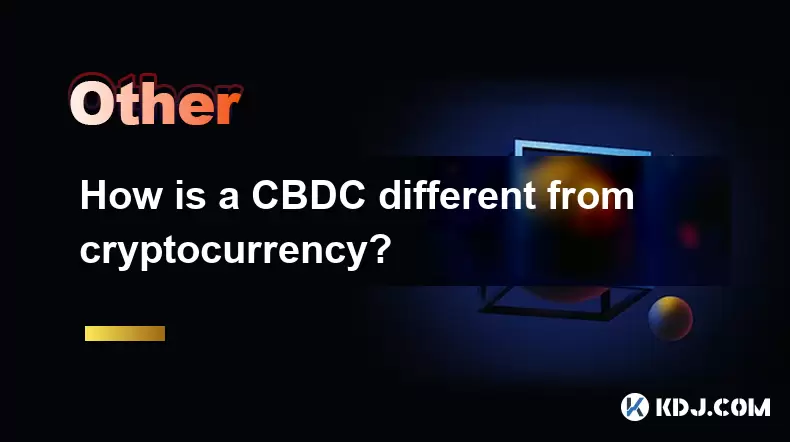
How is a CBDC different from cryptocurrency?
Aug 12,2025 at 09:21am
Understanding the Core Nature of CBDCsA Central Bank Digital Currency (CBDC) is a digital form of a country’s sovereign currency, issued and regulated...

How can zero-knowledge proofs enhance privacy on a blockchain?
Aug 12,2025 at 02:15am
Understanding Zero-Knowledge Proofs in Blockchain ContextZero-knowledge proofs (ZKPs) are cryptographic protocols that allow one party (the prover) to...
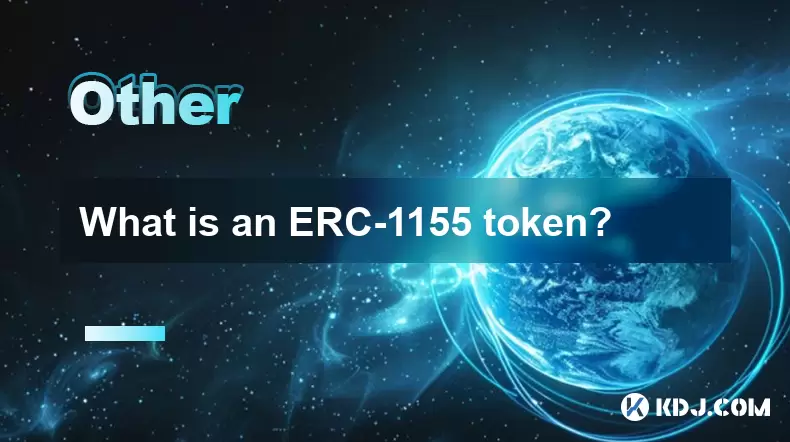
What is an ERC-1155 token?
Aug 12,2025 at 05:21am
Understanding the ERC-1155 Token StandardThe ERC-1155 token standard is a multi-token standard introduced on the Ethereum blockchain that enables the ...
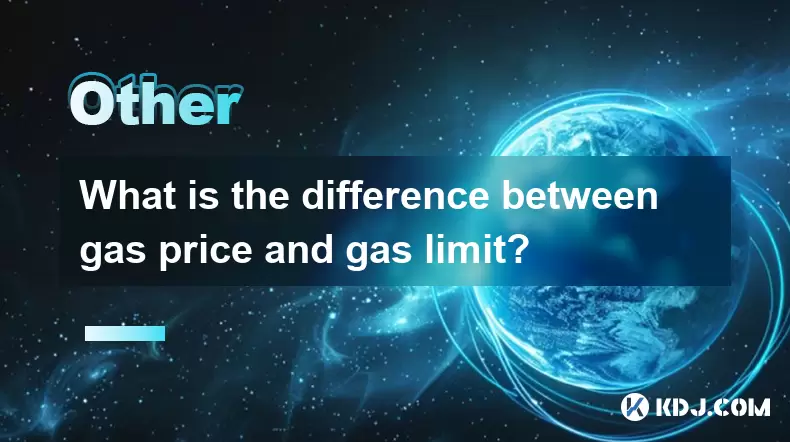
What is the difference between gas price and gas limit?
Aug 09,2025 at 08:42pm
Understanding Gas in Ethereum and EVM-Based NetworksIn blockchain networks that support smart contracts—particularly Ethereum and other EVM (Ethereum ...
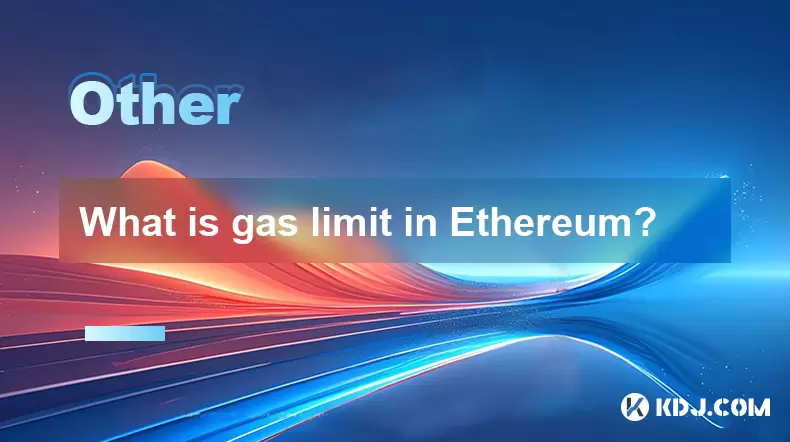
What is gas limit in Ethereum?
Aug 11,2025 at 04:29am
Understanding the Concept of Gas in EthereumIn the Ethereum network, gas is a unit that measures the computational effort required to execute operatio...
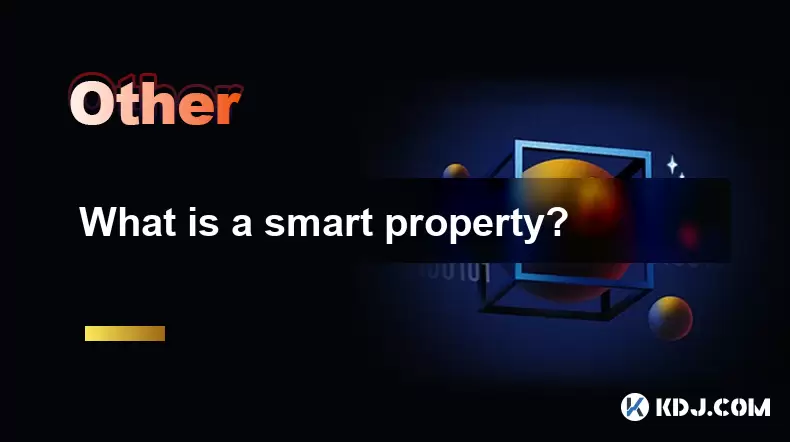
What is a smart property?
Aug 12,2025 at 05:14am
Understanding Smart Property in the Cryptocurrency EcosystemSmart property refers to physical or digital assets whose ownership and transfer are manag...

How is a CBDC different from cryptocurrency?
Aug 12,2025 at 09:21am
Understanding the Core Nature of CBDCsA Central Bank Digital Currency (CBDC) is a digital form of a country’s sovereign currency, issued and regulated...

How can zero-knowledge proofs enhance privacy on a blockchain?
Aug 12,2025 at 02:15am
Understanding Zero-Knowledge Proofs in Blockchain ContextZero-knowledge proofs (ZKPs) are cryptographic protocols that allow one party (the prover) to...

What is an ERC-1155 token?
Aug 12,2025 at 05:21am
Understanding the ERC-1155 Token StandardThe ERC-1155 token standard is a multi-token standard introduced on the Ethereum blockchain that enables the ...

What is the difference between gas price and gas limit?
Aug 09,2025 at 08:42pm
Understanding Gas in Ethereum and EVM-Based NetworksIn blockchain networks that support smart contracts—particularly Ethereum and other EVM (Ethereum ...

What is gas limit in Ethereum?
Aug 11,2025 at 04:29am
Understanding the Concept of Gas in EthereumIn the Ethereum network, gas is a unit that measures the computational effort required to execute operatio...

What is a smart property?
Aug 12,2025 at 05:14am
Understanding Smart Property in the Cryptocurrency EcosystemSmart property refers to physical or digital assets whose ownership and transfer are manag...
See all articles

























































































